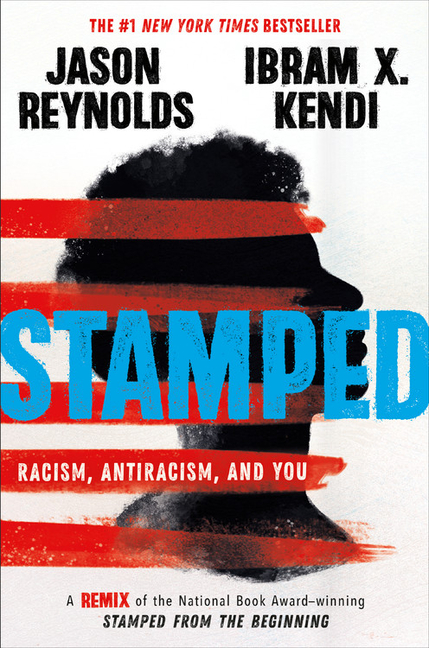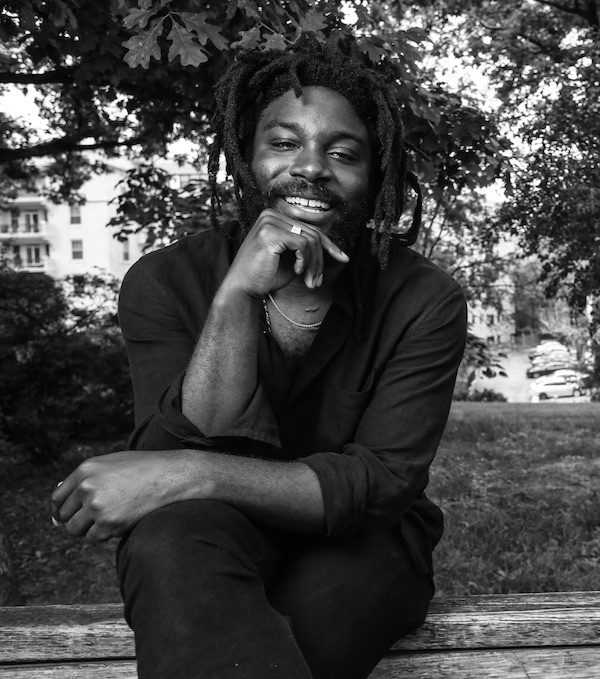Audiobook Excerpt narrated by Authors Ibram X. Kendi and Jason Reynolds
Stamped: Racism, Antiracism, and You |
Audiobook excerpt narrated by Authors Ibram X. Kendi and Jason Reynolds.
Translate this transcript in the header View this transcript Dark mode on/off
Ibram X. Kendi: And 12 year-old Tamir Rice, and 16 year-old Kimani Gray and 18 year-old Michael Brown, heartbreaks that are a product of America's history of racist ideas, as much as a history of racist ideas is a product of these heartbreaks. Meaning, if not for racist ideas, George Zimmerman would not have thought the hooded Florida teen who liked LeBron James, hip hop and South Park had to be a robber. Zimmerman's racist ideas in 2012 transformed an easygoing Trayvon Martin, walking home from a 7-Eleven, holding watermelon juice and Skittles into a menace to society, holding danger. Racist ideas cause people to look at an innocent black face and see a criminal. If not for racist ideas, Trayvon Martin would still be alive. His dreams of becoming a pilot would still be alive.
Young black males were 21 times more likely to be killed by police than their white counterparts between 2010 and 2012, according to federal statistics. The under recorded, under analyzed racial disparities between female victims of lethal police force may be even greater. Black people are five times more likely to be incarcerated than whites. I'm no math whiz, but if black people make up 13% of the US population, then black people should make up somewhere close to 13% of Americans killed by the police, and somewhere close to 13% of Americans sitting in prisons. But today, the United States remains nowhere close to racial equality.
African Americans make up 40% of the incarcerated population. These are racial inequities, older than the life of the United States. Even before Thomas Jefferson and the other founding fathers declared independence in 1776, Americans were arguing over racial inequities, over why they exist and persist and over why white Americans as a group were prospering more than black Americans as a group. Historically, there've been three groups involved in this heated argument, both segregationist and assimilationist, as I call these racist positions in Stamped from the beginning, think black people are to blame for racial inequity. Both the segregationist and the assimilationist think there's something wrong with black people, and that's why black people are on the lower and dying end of racial inequity.
The assimilationist believe black people as a group can be changed for the better, and the segregationist do not. The segregationist and the assimilationist are challenged by anti-racist. The anti-racist say there's nothing wrong or right about black people, and everything wrong with racism. The anti-racist say racism is the problem in need of changing, not black people. The anti-racist tried to transform racism. The assimilationist tried to transform black people. The segregationist tried to get away from black people. These are the three distinct racial positions you will hear throughout Stamped, racism, anti-racism and you, the segregationist, the assimilationist and the anti-racist and how they each have rationalized racial inequity.
In writing Stamped from the beginning, I did not want to just write about racist ideas. I wanted to discover the source of racist ideas. When I was in school and first really learning about racism, I was taught the popular origin story. I was taught that ignorant and hateful people had produced racist ideas, and that these racist people had instituted racist policies. But when I learned the motives behind the production of racist ideas, it became obvious that this folktale, though sensible, was not true.
I found that the need of powerful people to defend racist policies that benefited them, led them to produce racist ideas. And when unsuspecting people consumed these racist ideas, they became ignorant and hateful. Think of it this way. There are only two potential explanations for racial inequity, for why white people were free.
This audio excerpt is provided by Little, Brown Books for Young Readers.



